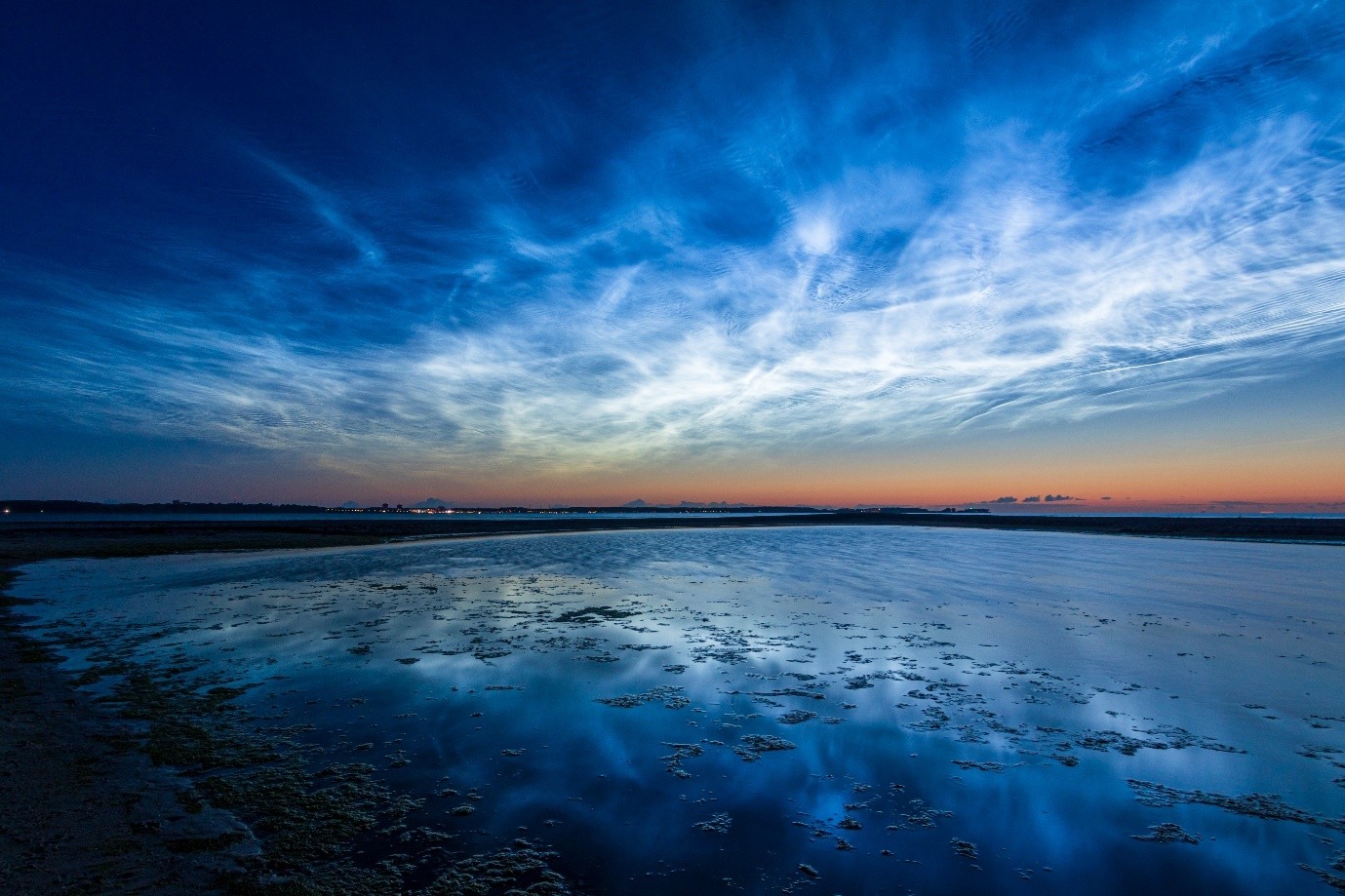What's Up? July 2025
As the long summer evenings slowly give way to darker skies, July offers a perfect opportunity to reconnect with the cosmos! From dazzling planetary pairings to noctilucent clouds, the night sky is full of sights to enjoy. Whether you're a seasoned stargazer or just beginning your journey, our What's Up guide for July highlights the key events and wonders to look out for!
July is upon us and as we move beyond the Summer Equinox we are now technically on track towards darker evenings and more vibrant night skies.
However right now is a great time to observe some lesser spotted skyward phenomena such as nocilucent clouds, also known as NLC's (not all clouds are bad!)
Noctilucent Clouds

(Image credit: Wikipedia)
These are high-altitude clouds that form in the upper atmosphere, specifically in the mesosphere, at altitudes of about 50 miles (80 km) above the Earth's surface. They are typically visible during the summer months, appearing as delicate, whispy blue or silver streaks across the sky after sunset. These clouds are composed of ice crystals that form on fine dust particles, often from meteors, and are most commonly observed at high latitudes. In recent years, their frequency has increased in lower latitudes due to rising methane concentrations in the upper atmosphere.
Constellations
If constellation hopping is your thing, try and spot these on an evening, each with bright stars that stand out in the lighter skies:
Scorpius: Low in the southern sky, with red star Antares.

(Image credit: Stellarium)
Bootes: With the bright orange star Arcturus.

(Image credit: Stellarium)
Corona Borealis: A small, semi-circular constellation near Bootes.

(Image credit: Stellarium)
A star system 3,000 lightyears away known as the 'Blaze Star' is set to become visible to the naked eye, shining like a 'new star' in the night sky.
T Coronae Borealis, also known as TCrB or the 'Blaze Star', last brightened in 1946, and astronomers initially predicted it would brighten again by September 2024.
As of mid-2025, T Coronae Borealis, the Blaze Star, hasn't exploded yet, but when it does happen, its brightness will temporarily increase. T CrB is a recurring nova, a star that brightens due to an interaction between two stars in a binary system, one a red giant and one a white dwarf.
'Nova' means 'new star' in Latin, so-called because it describes how a previously dim star can suddenly reach prominent naked-eye brightness in the sky.

(Image credit: space.com)
Material accretes from the red giant onto the white dwarf, until enough mass has transferred to set off a thermonuclear detonation.
This cause T CrB to brighten significantly, so keep your eyes peeled for this awesome astronomical occurance.
Summer Triangle: Formed by the stars Vega (Lyra), Deneb (Cygnus), and Altair (Aquila). Though not technically a constellation, this stellar line up is an 'asterism' which is simply a pattern of stars outside of the International Astronomical Union's usual list of constellations

(Image credit: Nasa.gov)
Deep Sky Objects
M13 (Hercules Cluster)

(Image credit: skyandtelescope)
This beautiful collection of stars is known as a globular cluster with M13 located in the constelation Hercules. It contains several hundred thousand stars around 22,000 light years from Earth.
M8 (Lagoon Nebula)

Image credit: (astrobackyard)
A giant instellar cloud in the constellation Sagittarius around 4000-6000 light years distant. It is classified as an emission nebula which is the type of nebula formed from ionized gases that emit light of various wavelenghts. This ionization is typically caused by high-energy ultraviolet photons emitted from nearby hot stars.
Planetary Conjunctions
July is rich with planetary pairings, offering several chances to see bright planets near the Moon:
* July 16 - Moon and Saturn: Look east after midnight to seewaning gibbous Moon cozy up to Saturn.
* July 21 - Moon and Venus: A brilliant Venus will shine near the thin crescent Moon just before sunrise.
* July 23 - Moon and Jupiter: Another early morning treat, with Jupiter appearing close to the sliver of the almost-new Moon.
* July 28 - Moon and Mars: Catch this pairing just after the sunset above the western horizon.
Full Moon: July 10
New Moon: July 24 - Great for general night time observing as moonlight is at a minimum keeping the sky as dark as possible.
Earth at Aphelion
On July 3, Earth reaches aphelion, it's farthest point from the Sun, at a distance of about 152.1 million kilometres (94.5 million miles). Despite being farther from the Sun the Northern Hemisphere experiences summer due to the axial tilt of the Earth.
















